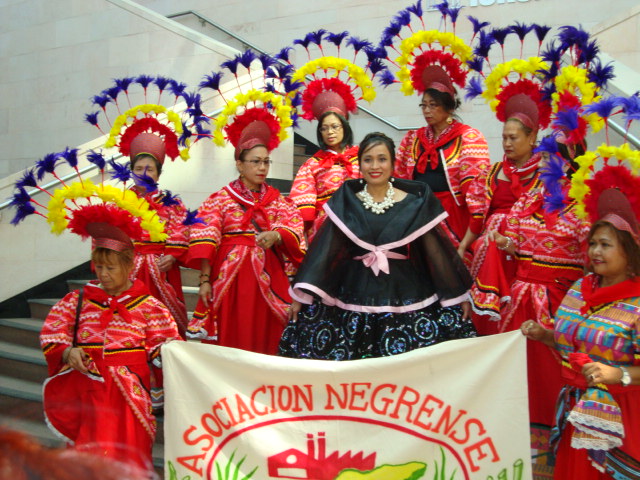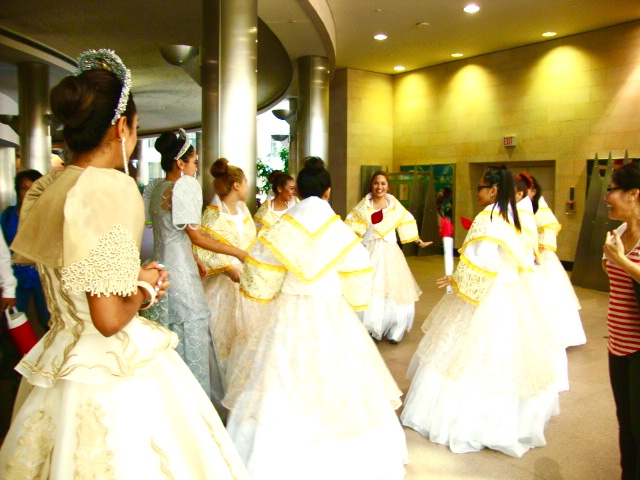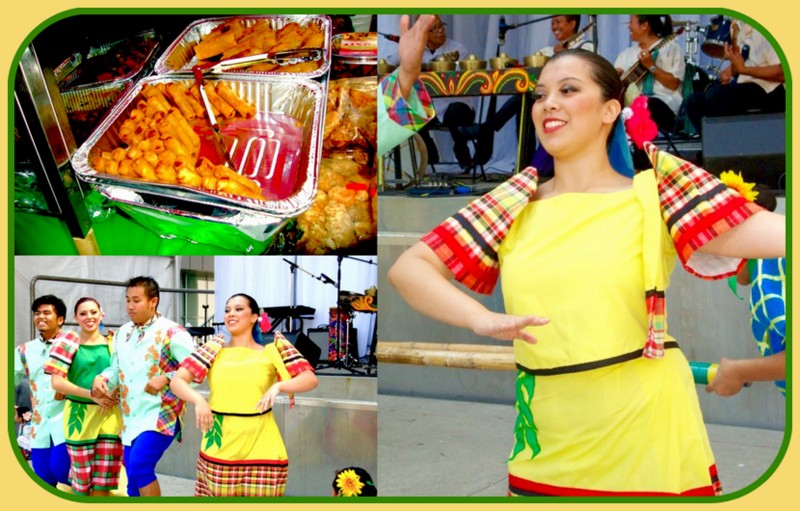
– Anonymous
It was “Mabuhay” time in Toronto at the end of August. The Philippine Independence Day Council’s Mabuhay Philippines Festival was held at David Pecaut Square. It was a very colourful and beautiful event which I enjoyed immensely. I didn’t know what the word mabuhay meant so I decided to find out. “This is our eternal greeting to everyone here and abroad, our salute to life as we raise our San Miguel beers. The word roughly can be translated to mean “to be alive, to live life!” It is a call to bring that sense of celebratory joy to everything about life…and that is why the resonance of the DOT slogan “ Its more fun in the Philippines! Mabuhay encompasses all the colorful fiestas of our country, where community seeks to come together to celebrate something. Even funeral wakes are a way to bring people together for poker and mah-jong!” (echonewspost.com)
By the way, the acronym DOT means Department of Tourism. All the costumed participants did the Philippines proud that day. Of all the street fairs I’ve been to for summer, this was the best for ethnic dress and also for entertainment. Different regions of the Philippines were represented. I’m into all things Pinoy since I have always had many friends from the Philippines.
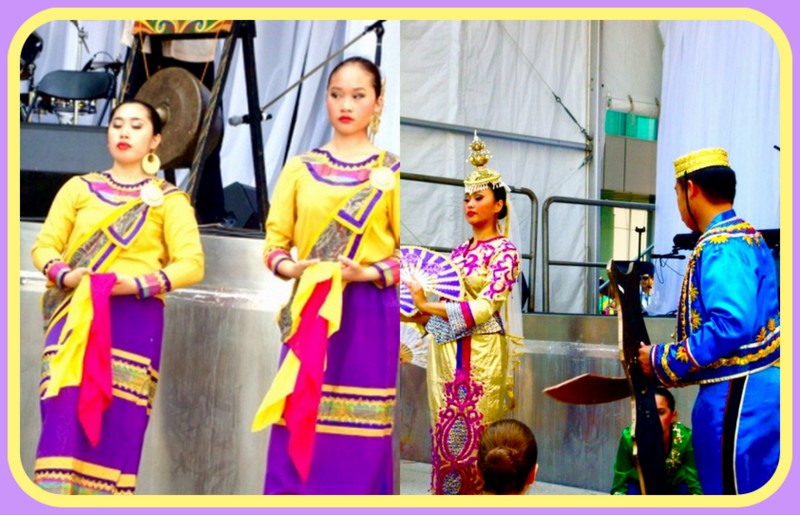
The tinikling dance (above) was my favourite. This is considered the traditional dance of the Philippines. Bamboo poles are placed on the floor by some of the dancers and moved while making a cllicking sound. The dancers who are standing move gracefully in between and over these bamboo poles. It looks like it would take a lot of skill and practice to perform this dance. All the dancers maneuvered beautifully throughout the performance and delighted the onlookers.

Considered as one of the oldest dances from the Philippines, this dance was originated in the islands of Leyte in the Visayan Islands. People of Leyte describe the tikling bird as one of the most unique in its movements – walking around and between the tree branches and some grass stems. This bird was named “tikling” from which the Tinikling dance got its name. Because of the creativeness of the people, they imitate this bird by using bamboo poles. (dance.net)
The above image shows that this tinikliing dancer had a beautiful head-dress and fans in both hands.
Apart from all the festivity going on, there was another dynamic that was playing itself out that day unexpectedly. I didn’t realize that this Festival would provide me with such a steep learning curve about culture and give me so much room for thought. It is said that “beauty is in the eye of the beholder” but I found out that culture is too. We all have different lenses through which we view the world around us. While I was in awe of all the colourful costumes and was happily enjoying the Festival, I didn’t realize my Filipina friend was disappointed by the event.
There was something missing for her. I gathered that the something missing was historical information and “spirit.” She wondered out loud whether it was just ethnic dress, dance, and music, that the Festival was all about. I gathered that she was also disappointed with the turn-out. Maybe she expected it to be a bigger Festival than it was. She was visiting from California. We didn’t stay for the parade.
Through my lens, several important aspects of “culture” were present – such as language, food, dress, dance and music. To have the very young children participating as well as Senior Citizens definitely covered the gamut of the culture’s age groups. Through a festival such as this, new stories would be made – another important aspect of culture. “There are many realities. There are many versions of what may appear
obvious. Whatever appears as the unshakeable truth, its exact opposite
may also be true in another context. After all, one’s reality is but
perception, viewed through various prisms of context.”
― Amish Tripathi, The Immortals of Meluha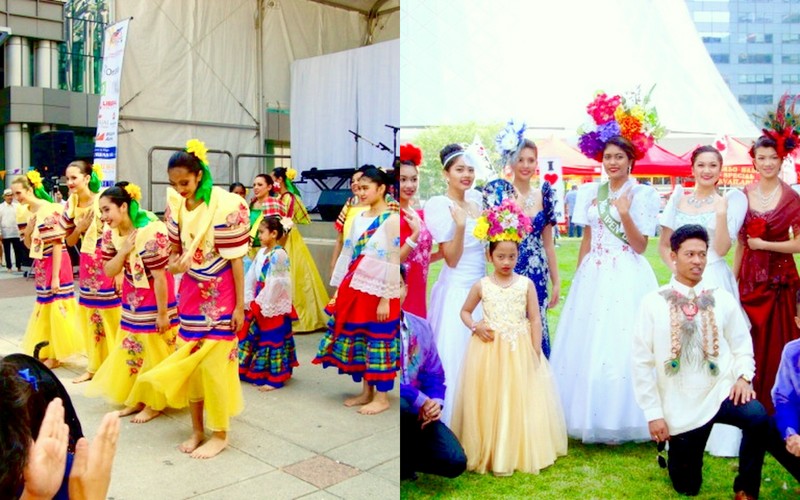
The context in which I viewed the culture was that of an outsider – a visitor. The context in which she viewed the Filipino culture was as an insider – someone born and raised there.
“How long have you been away from the country?” Laruja asked Ibarra.
“Almost seven years.”
“Then you have probably forgotten all about it.”
“Quite the contrary. Even if my country does seem to have forgotten me, I have always thought about it.”
― José Rizal, Noli Me Tangere (Touch Me Not)
Jose Rizal is considered to be one of the national heroes of the Philippines and was executed by the Spanish colonial government for the crime of rebellion. I have heard of this work “Touch Me Not” from my Filipino friends and the above is an excerpt from the book. There is a lot of national pride when this book is spoken of and when Jose Rizal’s name comes up. The Filipinos in Toronto have not forgotten their country as was evident there that day and as you can see from the images.
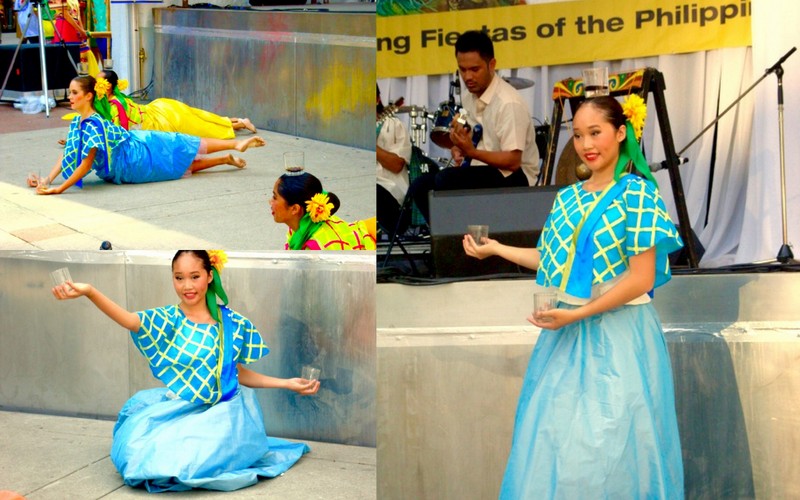
(ehow.com)
The Binasuan dance was my second favourite dance and none of the dancers dropped their glasses. It was very impressive when they got down on the floor with them.
There is a place in the Philippines called Negrense and this is what Wikipedia has to say about it – Negros (Tagalog pronunciation: [ˈneɡros]) is an island of the Philippines located in the Visayas. It is the third largest island in the country, with a land area of 13,328.4 square kilometres (5,146.1 sq mi). Inhabitants of the island are called Negrenses, the name of the Filipino island means Blacks in the Spanish language.
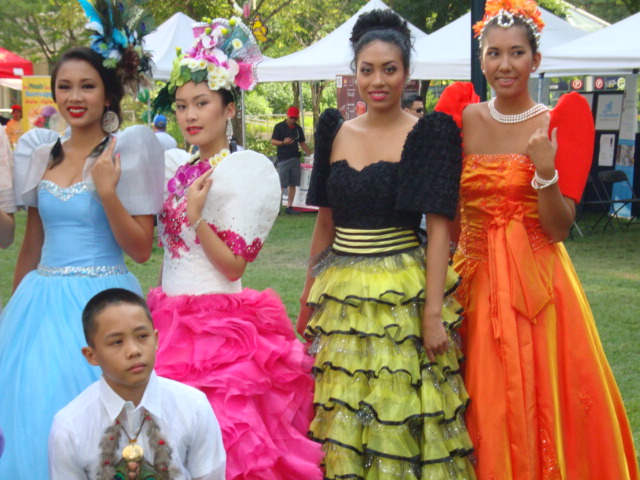 The sleeves on the dresses these lovely ladies are wearing are called “butterfly” sleeves and are traditional. “On special occasions, urban women may wear the terno, a long dress characterized by broad “butterfly” sleeves that rise slightly at the shoulders and extend about to the elbow. Many of the smaller ethnic groups have characteristic attire for events of special cultural significance.” I admired all the different styles of dress at this Festival and how proud the participants seemed to be about sharing their cultural background with others. It was obvious that the dressing up made the participants happy.
The sleeves on the dresses these lovely ladies are wearing are called “butterfly” sleeves and are traditional. “On special occasions, urban women may wear the terno, a long dress characterized by broad “butterfly” sleeves that rise slightly at the shoulders and extend about to the elbow. Many of the smaller ethnic groups have characteristic attire for events of special cultural significance.” I admired all the different styles of dress at this Festival and how proud the participants seemed to be about sharing their cultural background with others. It was obvious that the dressing up made the participants happy.
Last, but not least, there was the food. No cultural festival would be complete without native food. Pancit is one of my favourite dishes. However, I had some Ukoy while I was there at the suggestion of my friend. Ukoy is a shrimp fritter that’s served with a tangy vinegar dipping sauce. It was delicious. I also had a mango smoothie.
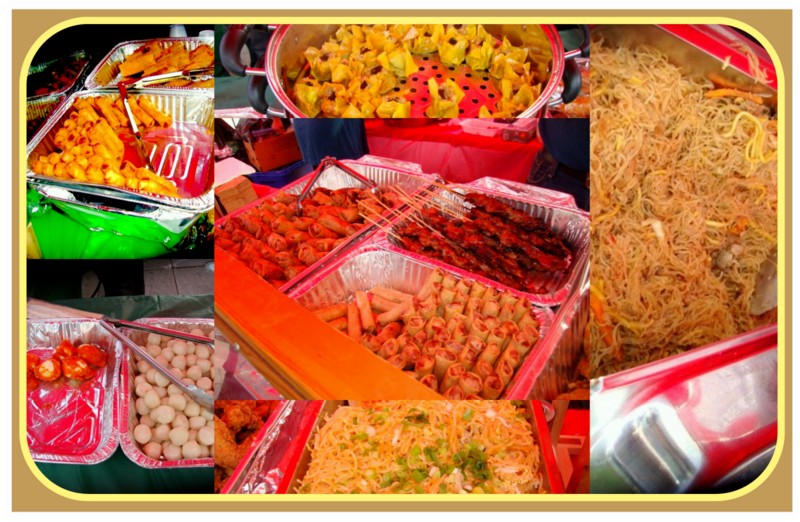
It was wonderful to experience the diversity of this culture right here in Toronto. It takes a lot of planning and hard work to put together an elaborate fiesta of this nature and I’m grateful to organizations like the Philippine Independence Day Council ( PIDC) for such a lovely smorgasbord of culture in one venue.
“Mabuhay”
Note
Pinoy is an informal demonym referring to the Filipino people in the Philippines and overseas Filipinos around the world. Filipinos usually refer to themselves as Pinoy or sometimes the feminine Pinay. (Wikipedia)

